The Full Guide to Strategic Intelligence


Key Takeaways:
Right now, 88% of companies feel that consumer needs are evolving faster than their businesses can adapt.
As a result, they miss opportunities to stand out from the competition, enhance their reputation, and ultimately win new customers.
Meanwhile, government regulations are tightening, supply chains are increasingly fragile, and markets are more volatile than ever.
How do companies even begin to navigate all these challenges?
The short answer: strategic intelligence.
You might wonder how a single process can tackle such a wide range of challenges—but it can.
Keep reading, and you’ll learn exactly why.
We’ll cover everything you need to know about strategic intelligence, from why it matters and how it drives results to how to put it into action the right way.
Let’s get started.
Put simply, strategic intelligence (SI) entails collecting, analyzing, and applying information that supports long-term business decision-making.
It transforms scattered, raw data into actionable insights, empowering you to make data-based moves that drive real impact in the marketplace.
SI draws on multiple data sources to deliver insights, including the ones listed below:
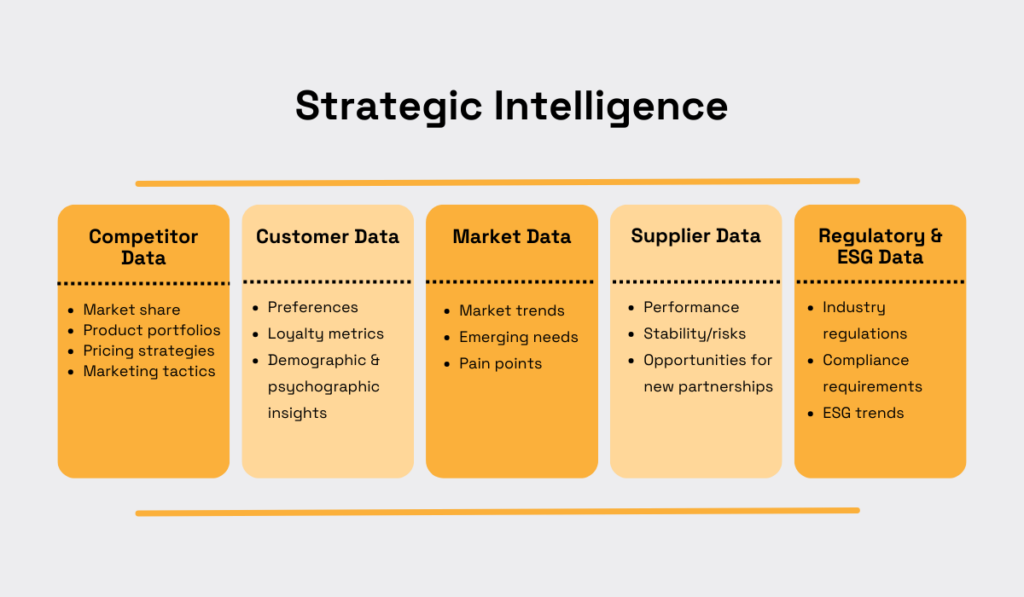
Source: Veridion
It’s important to note that some people use the terms strategic intelligence and business intelligence interchangeably, but they’re not the same.
They differ in focus, scope, and data sources.
Here’s a quick breakdown:
| Business Intelligence (BI) | Strategic Intelligence (SI) | |
|---|---|---|
| Focus | Internal operations and performance | External environment and competitive landscape |
| Scope & Data Sources | Internal data: sales, finance, supply chain, HR, production metrics, CRM data | External data: market reports, industry publications, regulatory updates, customer sentiment |
| Key Questions | “How are we performing?” “Where are our inefficiencies? | “What opportunities or threats exist in the market?” “How should we position ourselves to compete effectively? |
Essentially, while BI tells you “What is happening inside our business?”, SI reveals “What is happening in the market, and what should we do about it?”
Now that we’ve defined strategic intelligence, let’s look at the real-world advantages it can bring to your business.
Strategic intelligence gathers insights from market research, social media, industry reports, and more, then applies trend analysis, forecasting, and scenario planning to interpret that data.
This allows you to anticipate changes in your industry, customer expectations, or broader economic conditions before they fully unfold.
In other words, it helps you predict what’s coming next so your organization can prepare.
And right now, that matters more than ever.
Research shows that most companies feel their customers are evolving faster than their businesses can adapt.
At the same time, consumers, whose needs are shaped by various external forces like inflation and climate change, expect companies to respond more quickly and effectively.
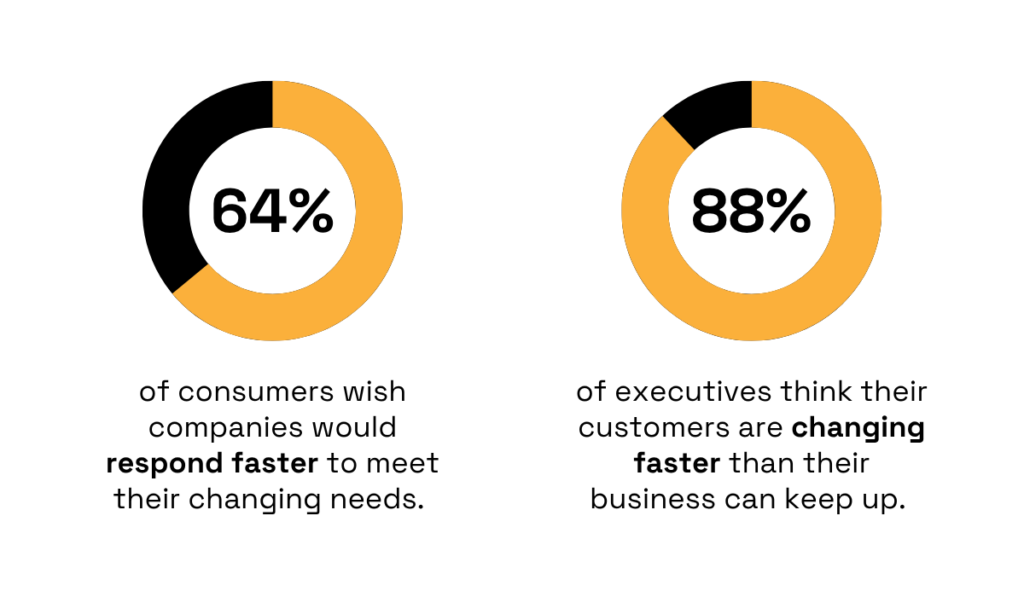
Illustration: Veridion / Data: Accenture
Strategic intelligence helps businesses do just that: stay ahead of external shifts while keeping pace with customers’ ever-changing expectations.
Take RHINOSHIELD, for example.
Known for their high-protection phone cases and accessories, they faced a challenge:
How do they stay true to sustainability, their core value, while also capturing the attention of young, design-conscious consumers?
Instead of guessing, they turned to strategic intelligence.
Here’s what they gained:
Armed with these insights, RHINOSHIELD launched Taiwan’s first 100% recycled mobile phone case, the CircularNext Sustainable Phone Case.
Crafted entirely from recycled cases and production leftovers, it incorporates Digital Lavender, WGSN’s 2023 key color.
Milu Yao, Manager of the Brand & Design Project Dept. at RHINOSHIELD, noted:

Illustration: Veridion / Quote: WGSN
That’s the power of strategic intelligence.
You don’t guess. You don’t chase trends after they’ve passed.
You know, and you know ahead of time.
Which means you can act decisively, stand out, and win new customers, just like RHINOSHIELD did.
Strategic intelligence doesn’t just help you stay on top of your customers and market changes, but ahead of your competitors, too.
It collects data on their products, pricing, marketing strategies, financial performance, and more.
This, in turn, enables you to benchmark performance against industry players to spot areas for improvement.
Crayon’s 2025 survey shows just how important this has become.
Differentiation is getting harder, market noise is intensifying, and, most importantly, the cost of being underprepared is massive.
On average, enterprises lose $2–$10 million annually in competitive deals they could have won, simply because sales teams weren’t equipped with the right insights.
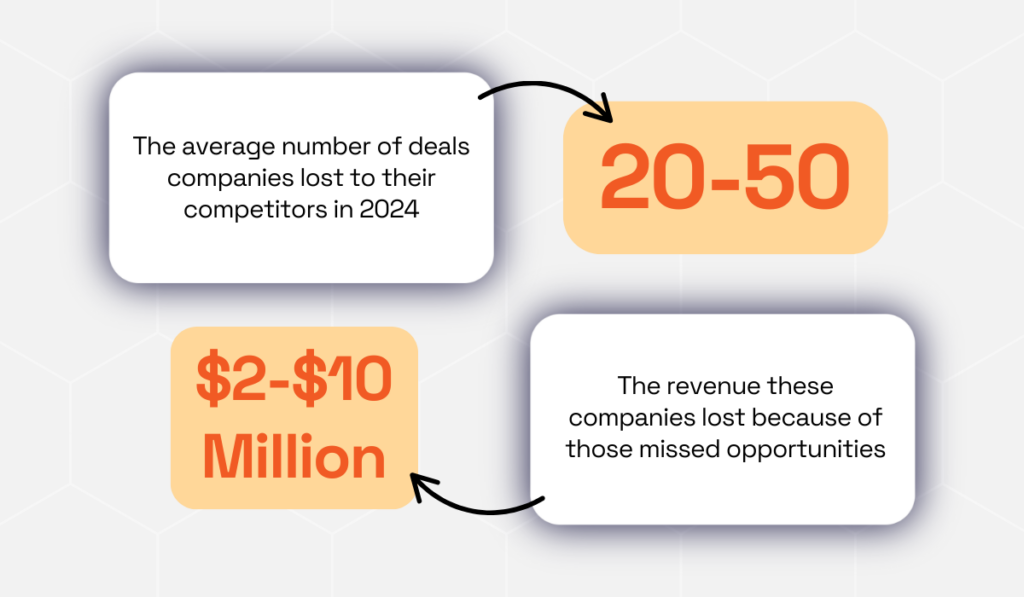
Illustration: Veridion / Data: Crayon
If organizations could learn more effectively from competitors, they could refine their offerings, create unique advantages, and win more deals.
Take it from Fuze, a unified communications as a service (UCaaS) company.
They were having trouble staying on top of a growing list of competitors, with new names surfacing on sales calls almost weekly.
Rob Bois, Fuze’s Senior Director of Product Marketing at the time, recalls:
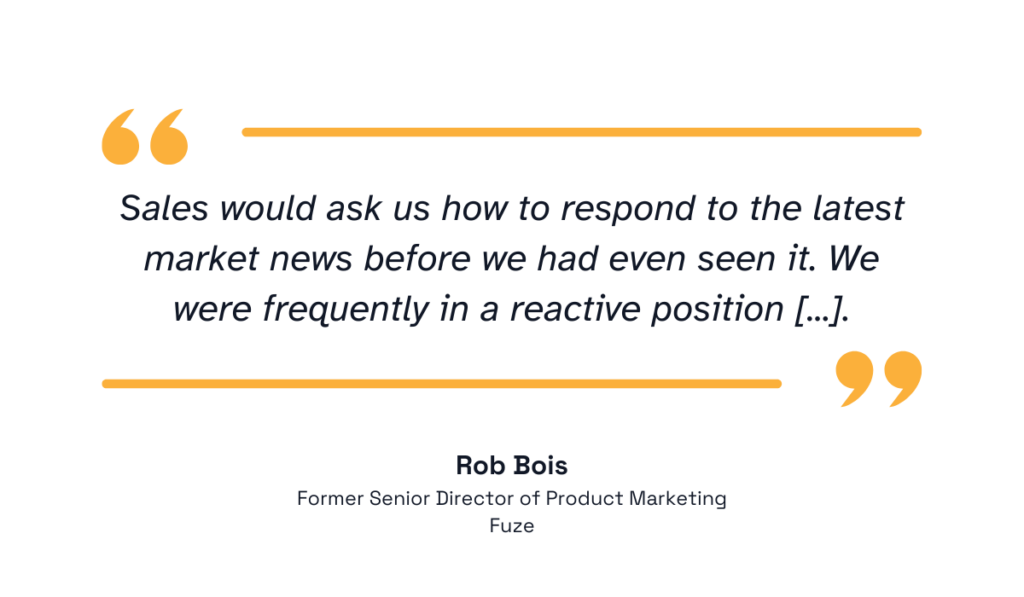
Illustration: Veridion / Quote: Crayon
But after implementing strategic intelligence, all that changed.
They began spotting subtle competitive moves early and engaging stakeholders proactively.
For instance, they detected a quiet change on a competitor’s website that suggested a threat to one of Fuze’s differentiators.
Bois immediately involved the right product managers, enabling them to craft a proactive response before the competitor’s announcement went public.
Yes, all of this is possible with SI.
You don’t have to wait for your competitors to make a move anymore.
You can see it all before it even happens, empowering you to take proactive action and stay ahead.
Thanks to its ability to monitor political, economic, technological, and regulatory changes, SI enables organizations to anticipate potential threats and risks.
This enables you to respond to crises—whether financial, operational, reputational, or strategic—more quickly and effectively, thus minimizing disruption and potential reputational damage.
The S-RM 2022 Strategic Intelligence Report reveals that this is one of the most common use cases for strategic intelligence.
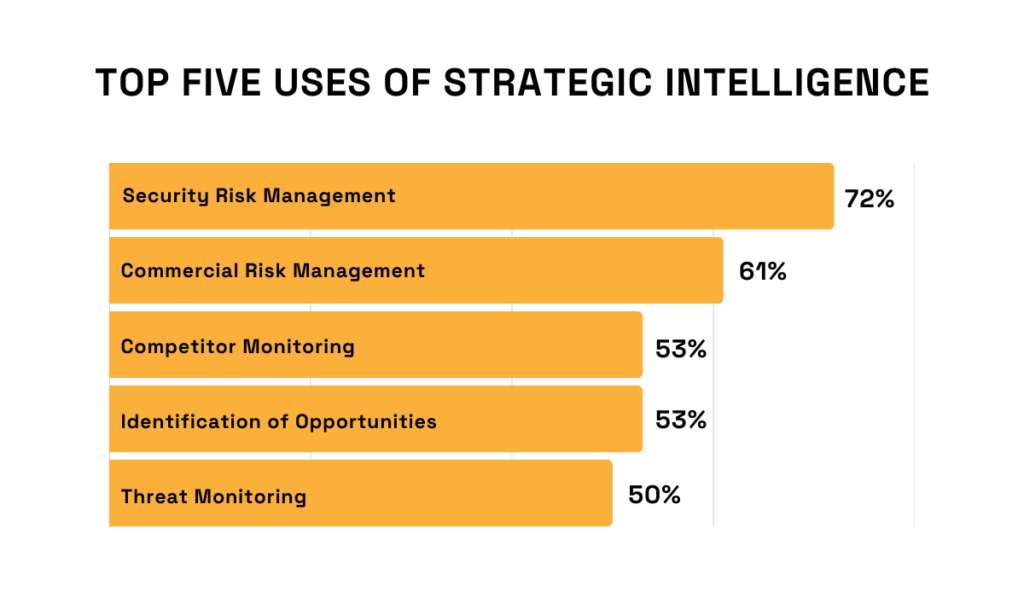
Illustration: Veridion / Data: S-RM
Whether applied to security or commercial risk management, crisis management, or threat monitoring, SI is primarily used to identify and prevent various disruptions.
For example, Coca-Cola HBC uses SI to monitor supplier risk.
They have a strong program that reviews the risks and performance of all suppliers against their SGPs, PSA principles for agricultural ingredients, and other vital factors affecting their business.
For financial risks, they rely on Moody’s financial intelligence.
According to their website:
“Credit research provided by Moody’s Analytics includes extensive and detailed coverage on the creditworthiness of […] Critical Suppliers. This research enables us to assess risk and opportunities associated with our supply chain and develop proactively risk management programs.”
Thanks to these insights, Coca-Cola HBC isn’t caught off guard by potential crises, like, say, a major supplier going bankrupt.
Instead, they are always prepared in advance, keeping their supply chain running smoothly no matter what surprises come their way.
If strategic intelligence is starting to sound compelling, you’ll probably want to learn how to implement it effectively.
Here are some best practices to help you get it right.
If SI doesn’t support the organization’s overall goals, it’s essentially pointless.
Collecting, analyzing, and sharing random data without a clear focus only wastes effort, time, and money.
So, before you even start implementing SI, map out the company’s long-term vision (e.g., market leadership, sustainability) and short-term priorities (e.g., launching a new product).
From there, try to identify the key success metrics that measure progress toward these goals, and focus your data collection and analysis on information that directly influences them.
For example:
It’s really important to involve all departments in this process.
Sales, marketing, finance, procurement, IT, and others each see the business from a different angle and can highlight challenges and opportunities that you might miss.
Their insights are a must for aligning strategic intelligence with the overall company strategy.
Joanna Knight, CEO of Leaders Inc. and Property Academy, puts it perfectly:
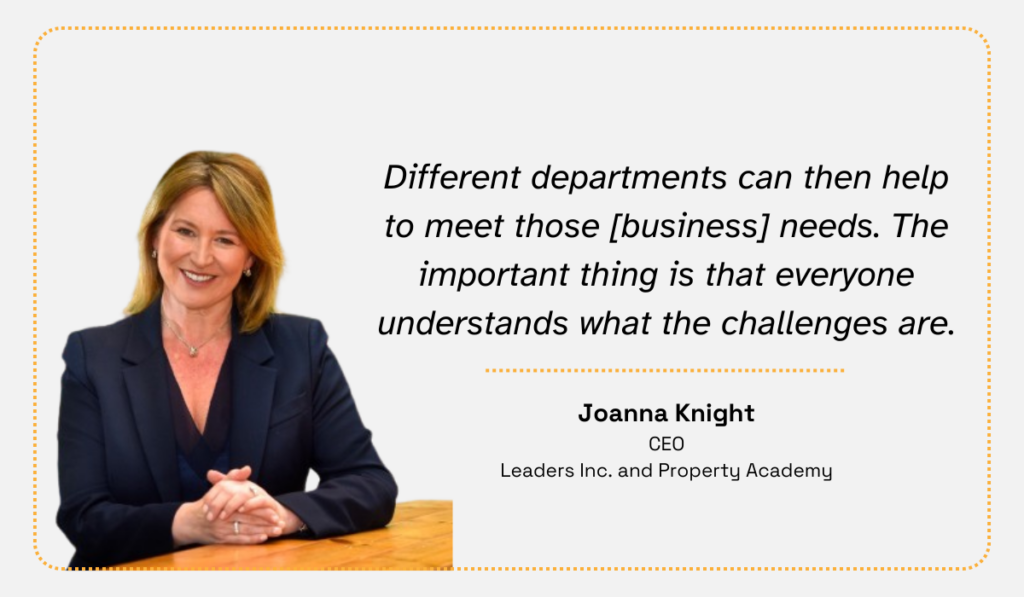
Illustration: Veridion / Quote: Raconteur
By bringing everyone together, you unlock diverse perspectives and approaches to problem-solving.
This collaboration ensures your strategic intelligence efforts are focused where they matter most, ultimately bringing the company closer to where it wants to be.
Strategic intelligence produces vast amounts of data, so having the tools to gather, process, and analyze this information is vital.
In fact, as highlighted in the S-RM study we referenced earlier, some of the most common intelligence challenges are that it takes too long to digest and that there’s too much information.
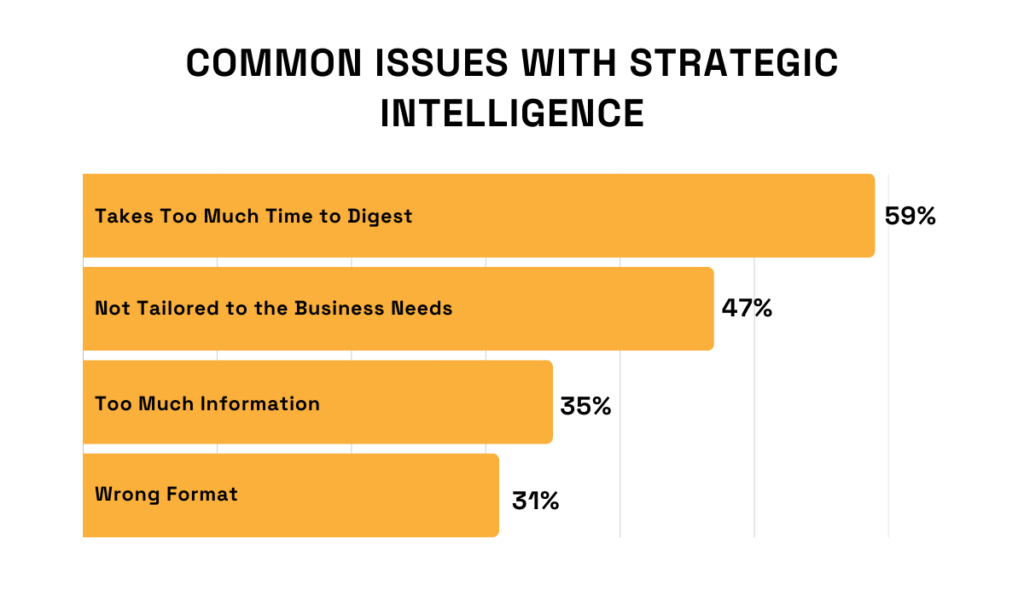
Illustration: Veridion / Data: S-RM
Luckily, there are tools that eliminate those issues, ultimately saving time, reducing errors, and helping you focus on what really matters: making smarter decisions.
So, what are the “right tools” anyway?
First, you need a solution that can gather and process relevant data.
For example, our AI-powered strategic intelligence platform, Veridion, offers:
Veridion goes beyond static firmographics, giving you access to ESG policies, technographic stacks, operational footprints, compliance data, and more.
This allows for more nuanced segmentation and smarter risk models.
Our proprietary aggregation engine continuously collects and verifies information from company websites, public registries, regulatory filings, product catalogs, social profiles, and trusted news outlets.
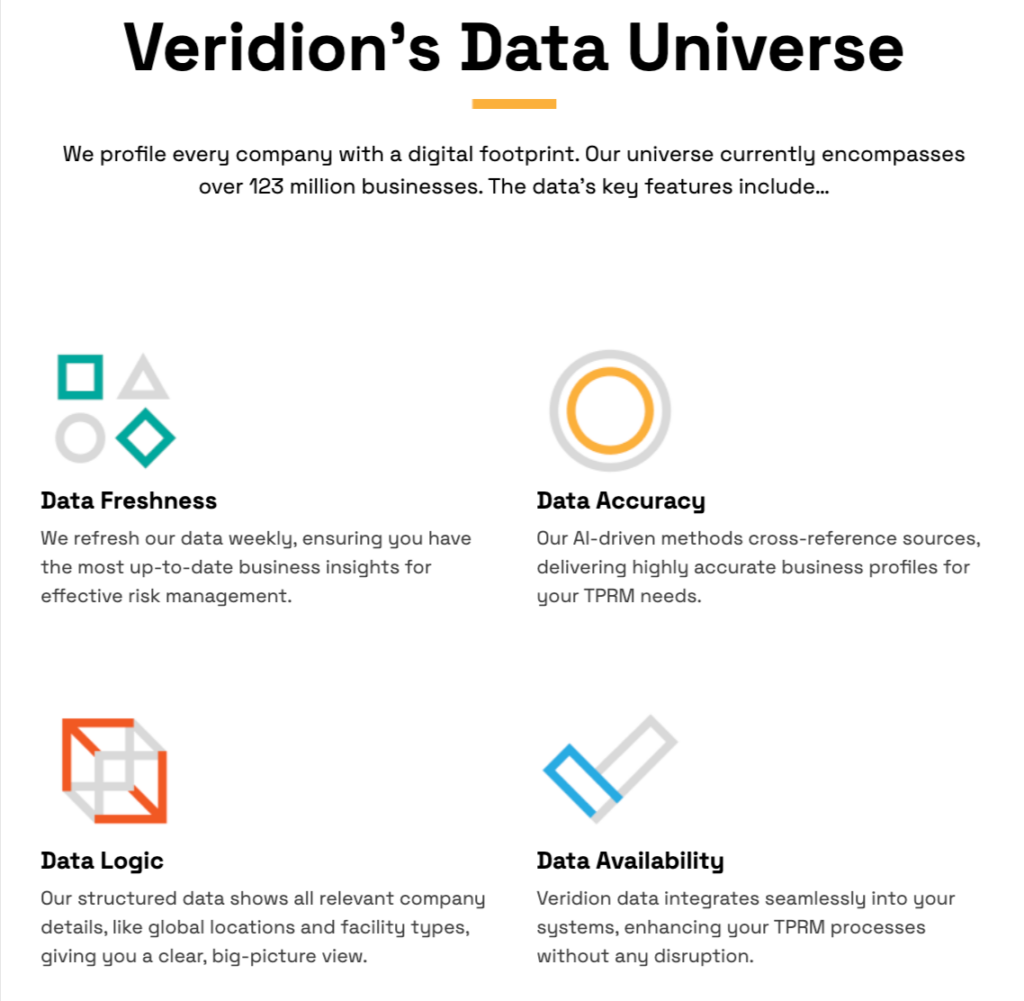
Source: Veridion
We only process first-party or publicly accessible data, and advanced AI ensures everything you see is accurate, relevant, and actionable.
Ultimately, with Veridion, you can see everything that’s happening with your partners, competitors, and the market, in real time.
Next, you’ll want tools to visualize and share all this data.
BI software is one great option.
These tools empower your team to see, share, and act on data effortlessly.
You can create interactive dashboards that display all key metrics in one place, with a wide range of templates and visualizations to communicate insights clearly:
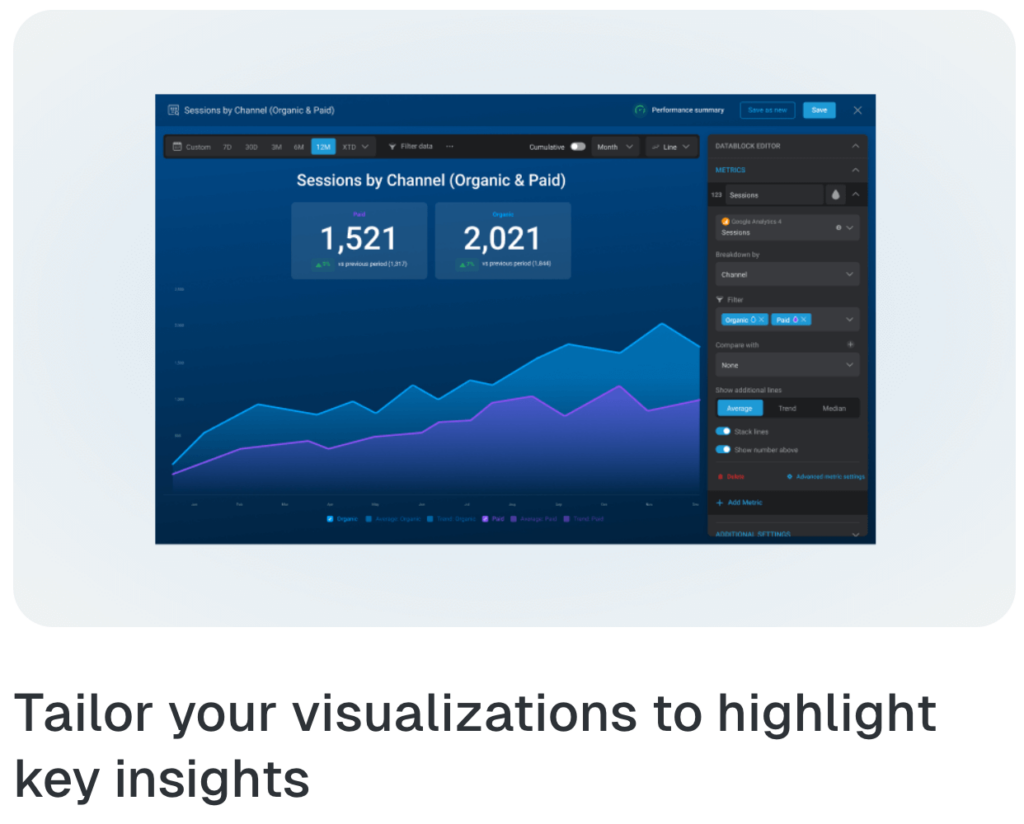
Source: Databox
BI platforms also streamline reporting, enabling you to share insights with your team, board, or clients instantly, in your preferred format.
Many even allow automatic delivery of reports to Slack, email, or other channels, on your schedule.
The combination of these two types of tools is such a game-changer for your daily operations.
Just imagine the time saved by eliminating manual data gathering, analysis, reporting, and communication: you get all the benefits of strategic intelligence, without any heavy lifting.
Simply implementing intelligence and then forgetting about it doesn’t cut it.
You need to be constantly asking: Is it actually improving decision-making, performance, or risk management?
In other words, is it making a real difference?
Regular monitoring and evaluation help identify areas for improvement early, allow for course correction if needed, and ensure your investment in intelligence is actually worthwhile.
That’s why defining clear KPIs from the get-go and monitoring them regularly is a must.
And don’t just rely on numbers: use a mix of quantitative and qualitative metrics:
| Quantitative metrics | Measurable data such as revenue growth, cost savings, or reduced response time |
| Qualitative metrics | Harder-to-measure effects like improved strategic clarity, better executive decision-making, or enhanced competitive awareness |
So, which KPI should you track exactly?
The short answer: it depends.
The specific KPIs you track should align with your goals, needs, and strategic intelligence strategy.
However, to get started, consider these commonly monitored factors:
| Sales impact | How much has intelligence contributed to actual sales results? |
| Prediction accuracy | How well does your intelligence anticipate competitors’ moves? |
| Winning ratio | Are you winning more deals thanks to market insights? |
| Decision influence | How many key decisions are guided by intelligence? |
| Timeliness | Is intelligence delivered on time? |
| Efficiency | Has the time to complete tasks or analyses decreased? |
| Cost savings | Are you saving money while working smarter? |
If this feels overwhelming, you can start with just a few KPIs and then expand and refine over time as you get better at it.
Remember, strategic intelligence isn’t something you can just “set and forget.”
You need to ensure it’s delivering value. Otherwise, it risks becoming just another unnecessary cost.
Strategic intelligence allows you to reclaim control in a world where change feels relentless.
It enables you to finally step out of that reactive mode and actually anticipate, innovate, and stand out in a crowded market.
In fact, if you decide to integrate SI into your operations, you may find that your teams don’t just respond faster to change, but thrive on it.
So, while the future may be unpredictable, strategic intelligence empowers your business to face it with confidence, agility, and resilience.